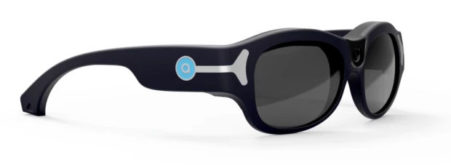Remember Google Glass? Those smart glasses that were released by Google to the public in May of 2014 (see image below). Less than a year later production was halted because, well, not many people wanted to walk around with a goofy looking pair of specs on their noses. They really did look wacky. I’m not surprised the gadget never caught on.

Well, despite the (predictable?) flop of Google Glass, it turns out that there has proven to be a fantastic use case for such smart glasses: for people with visual impairments.

There is a company out there called Aira that provides an AI-guided service used in conjunction with smart glasses and an app on a smartphone. When images are captured by the glasses’ forward-facing camera, image and text recognition are used and an AI assistant, dubbed “Chloe”, describes in speech what is present in these videos: whether it be everyday objects such as products on a shelf in your pantry, words on medication bottles or even words in a book.
Quite amazing, isn’t it?
Simple tasks like object and text recognition are performed locally on the smartphone. However, more complex tasks can be sent to Aira’s cloud services (powered by Amazon’s AWS).
Furthermore, the user has the option to, at the tap of a button on the glasses or app, connect to a live agent who is then able to access a live video stream from the smart glasses and other data from the smartphone like GPS location. With these the live agent is able to provide real-time assistance by speaking directly to the visually impaired person. A fantastic idea.
According to NVIDIA, Aira trains its object recognition deep learning neural networks not on image datasets like ImageNet but from 3 million minutes worth of data captured by their users, which has been annotated by Aira’s agents. An interesting idea considering how time consuming such a task must have been. But this has given the service an edge as training from real-world scenarios has provided, as reported, better results.
The uses for Aira’s product and service are pretty much endless! As suggested on their site, you can use Aira for things like: reading to a child, locating a stadium seat, reading a whiteboard, navigating premises, sorting and reading mail and the paper, enjoying the park or the zoo, roaming historical sites. Gosh, the list can be endless!
And thankfully, the glasses don’t look goofy at all! That’s definitely a win right there.

Finally, I would encourage you to take a look at this official video demonstrating the uses of Aira. This is computer vision serving society in the right way.
(Unfortunately, the video that was once here has been taken down by the pubisher)
To be informed when new content like this is posted, subscribe to the mailing list (or subscribe to my YouTube channel!):



